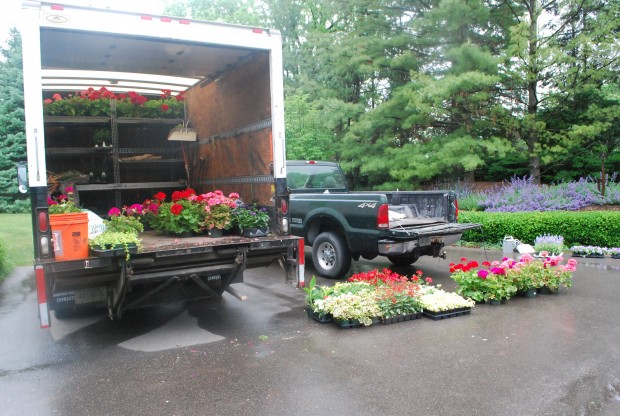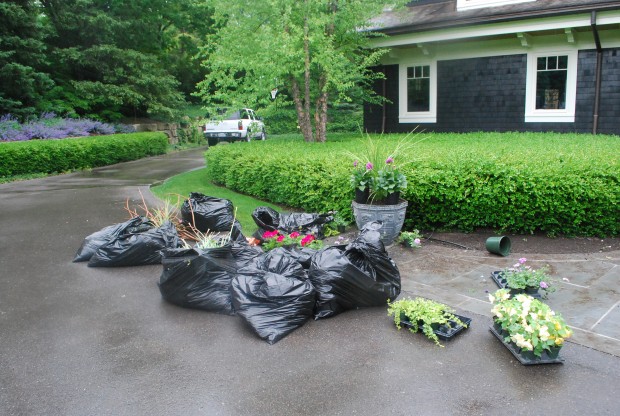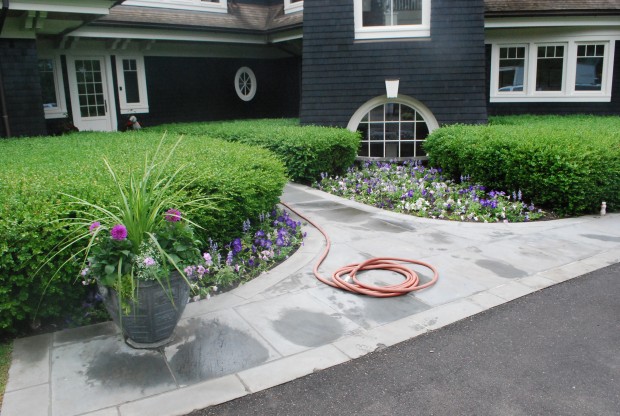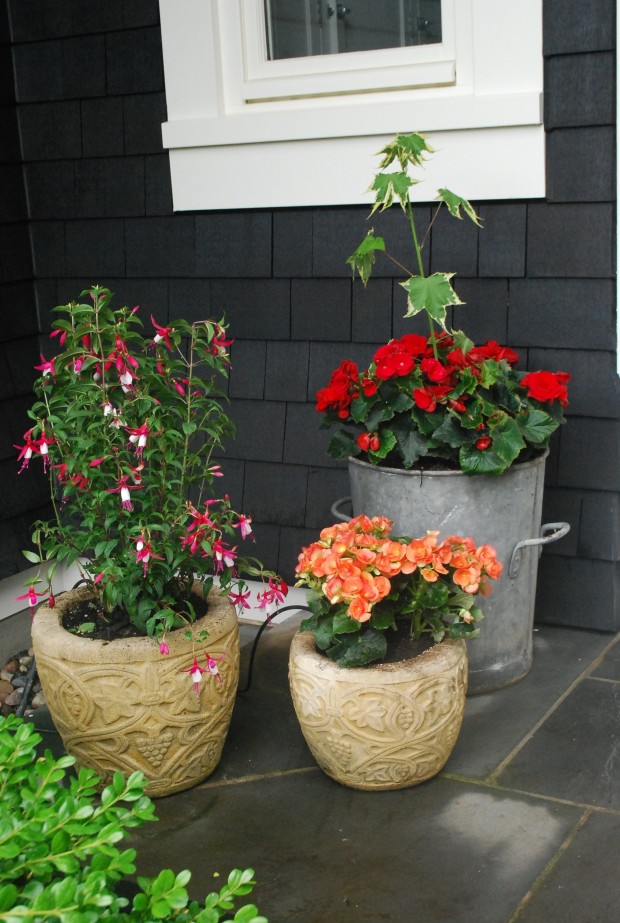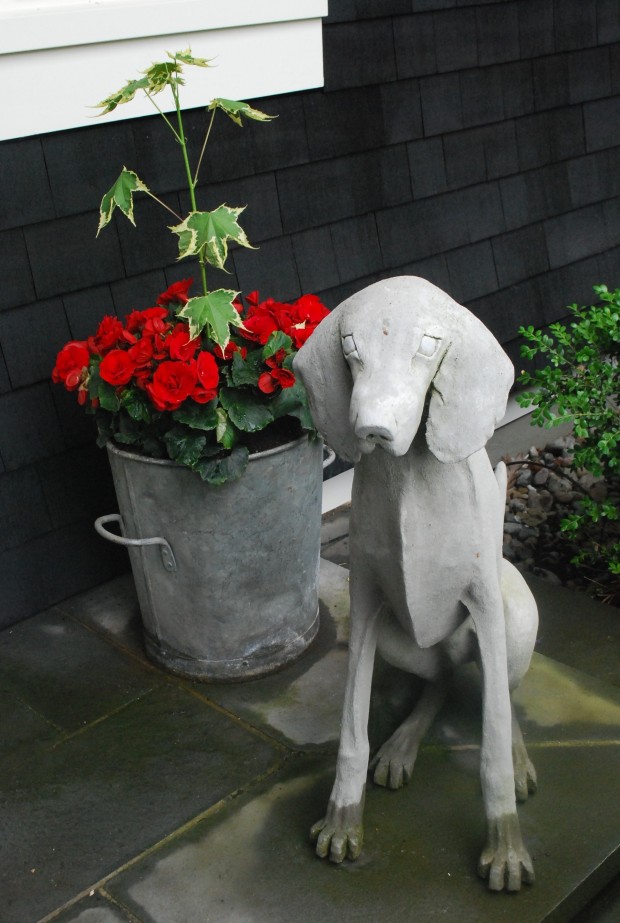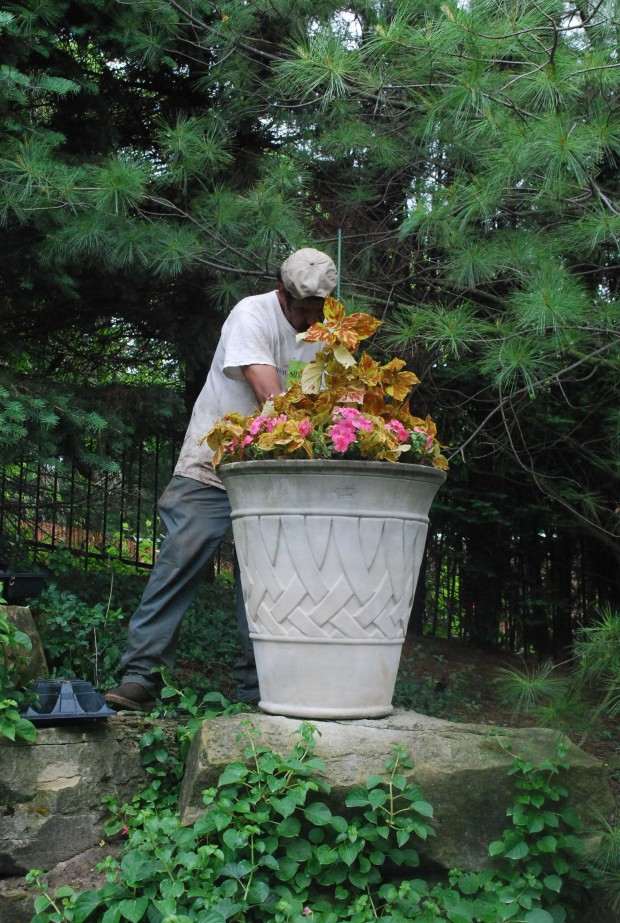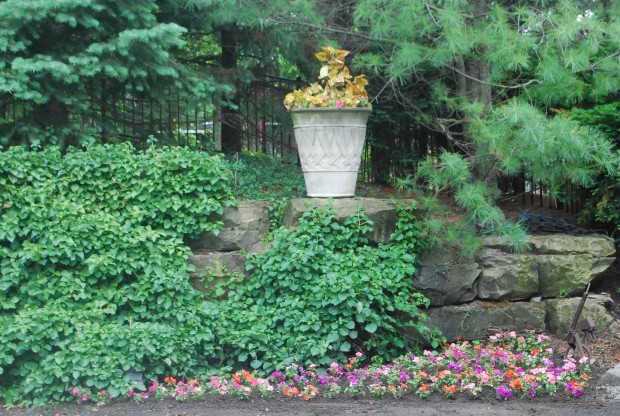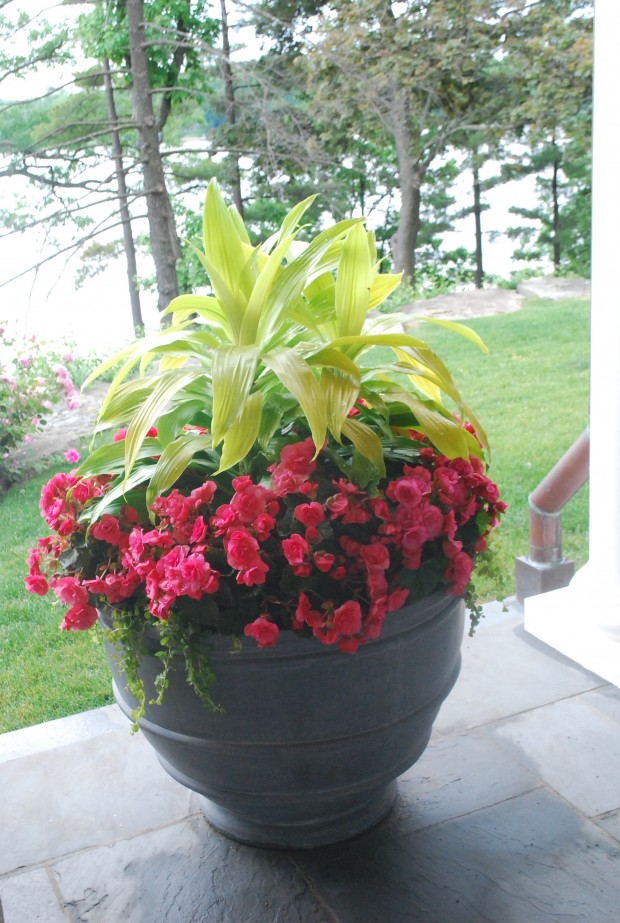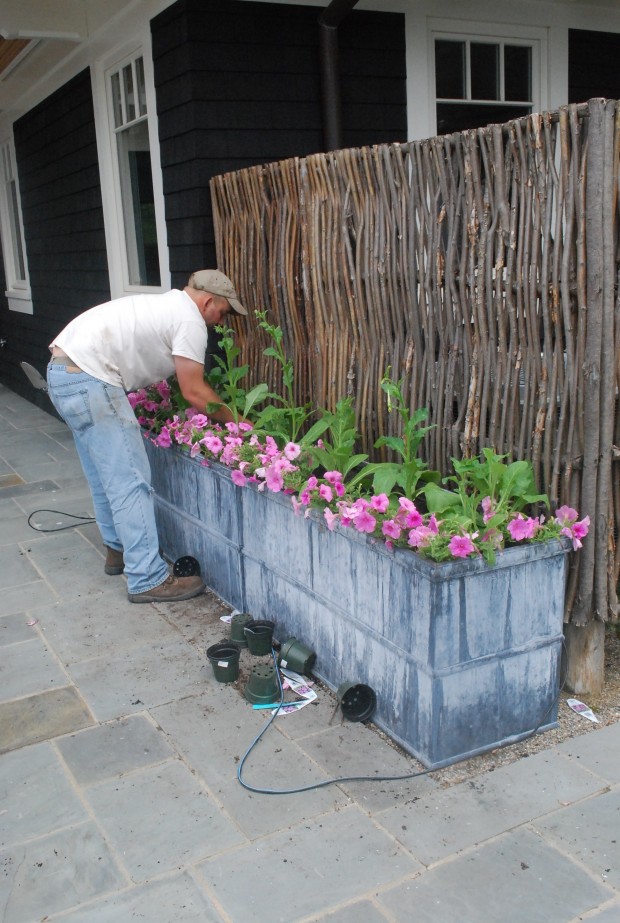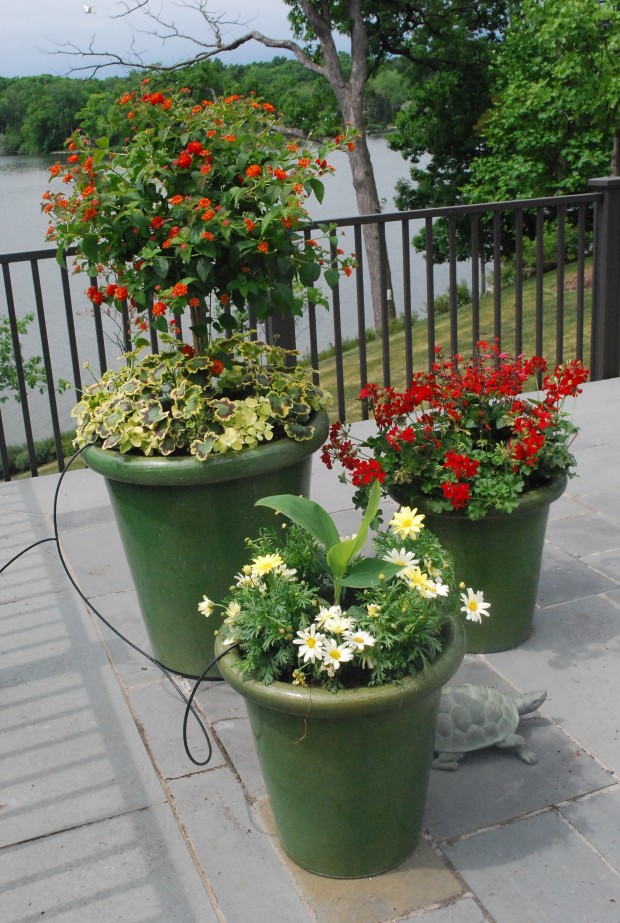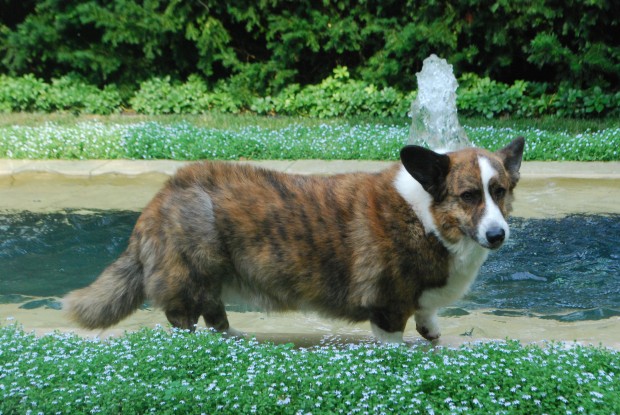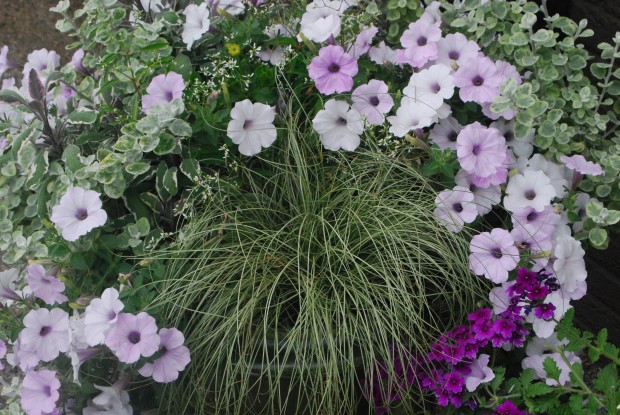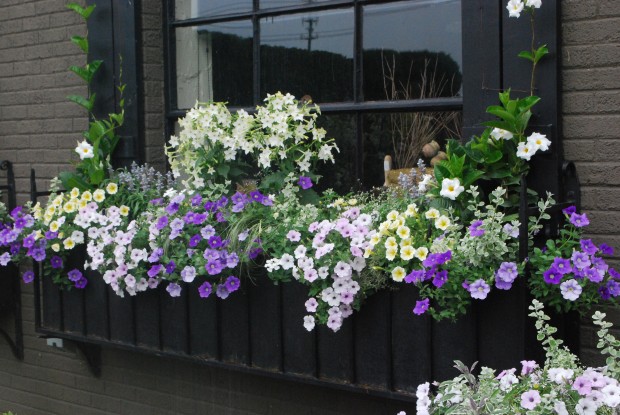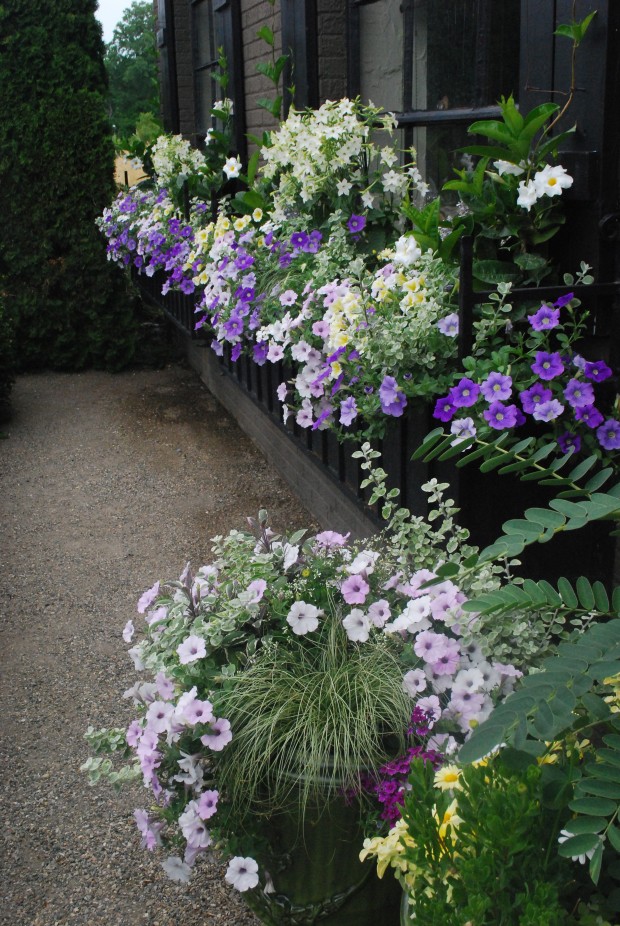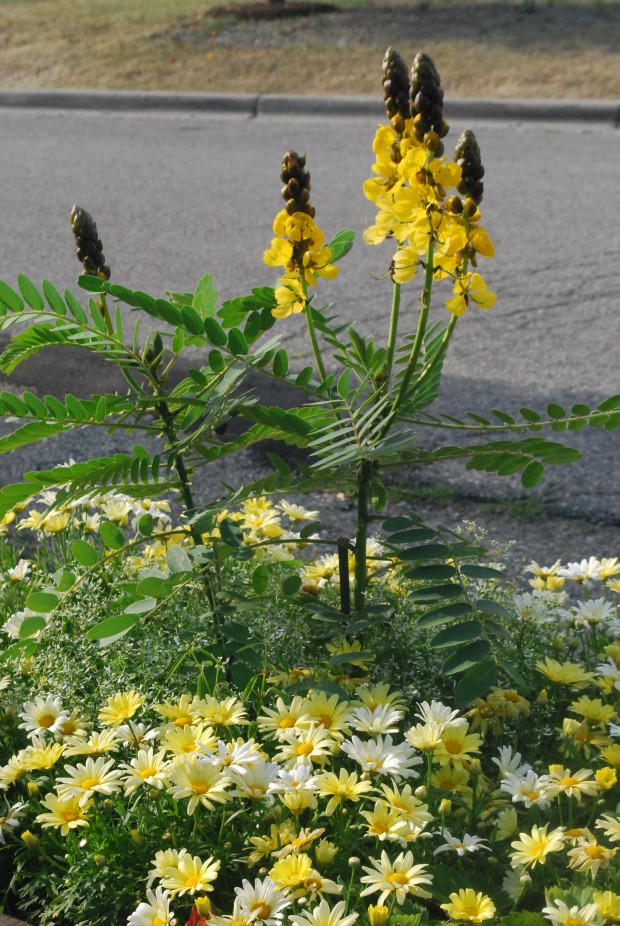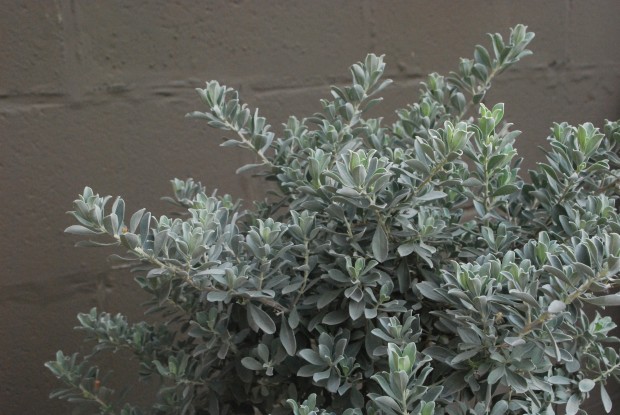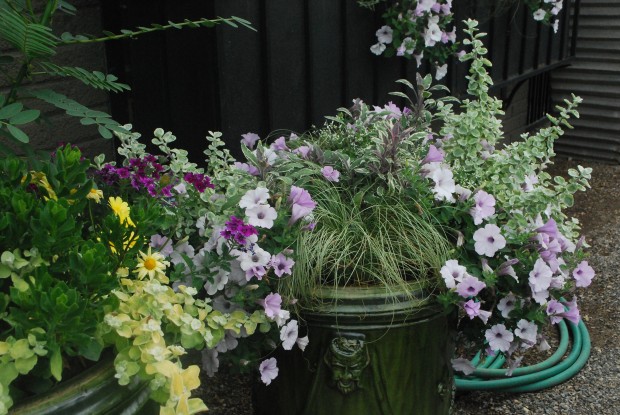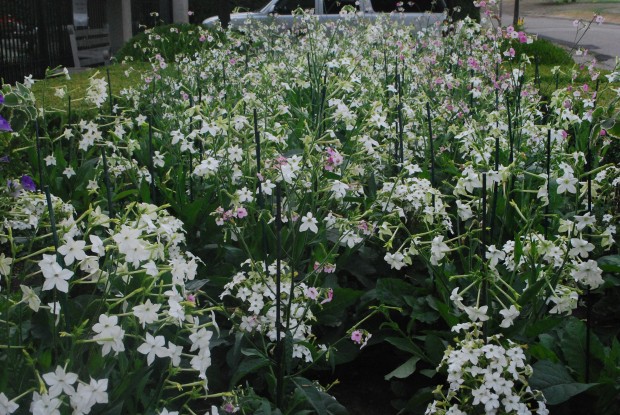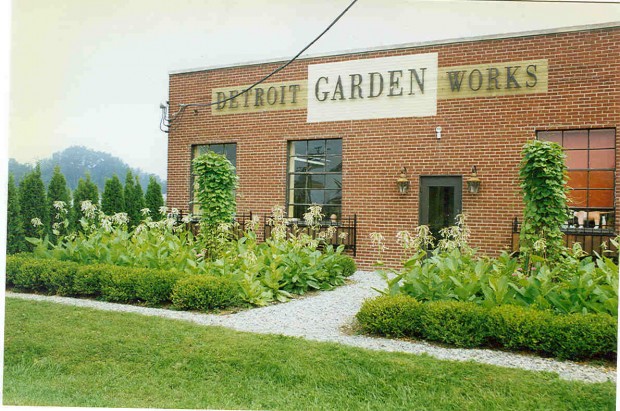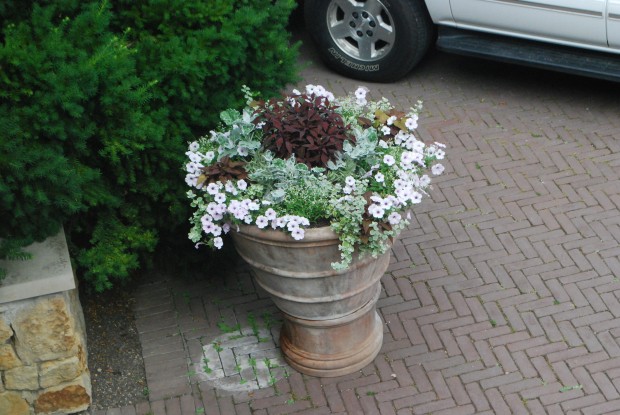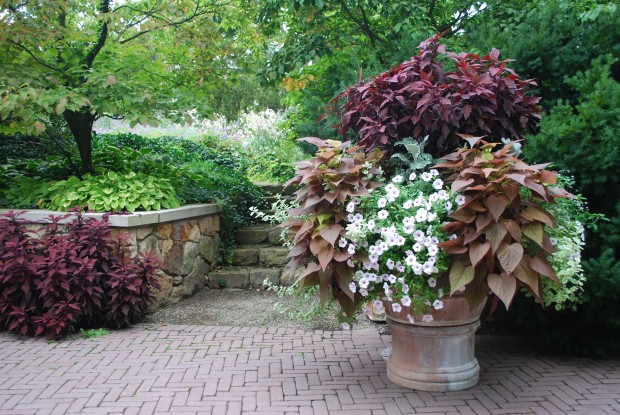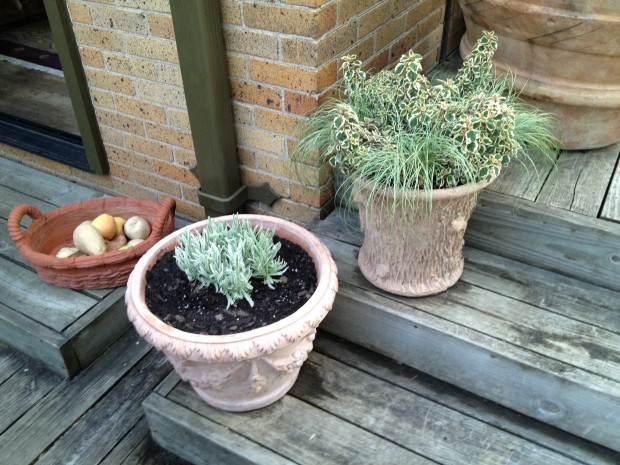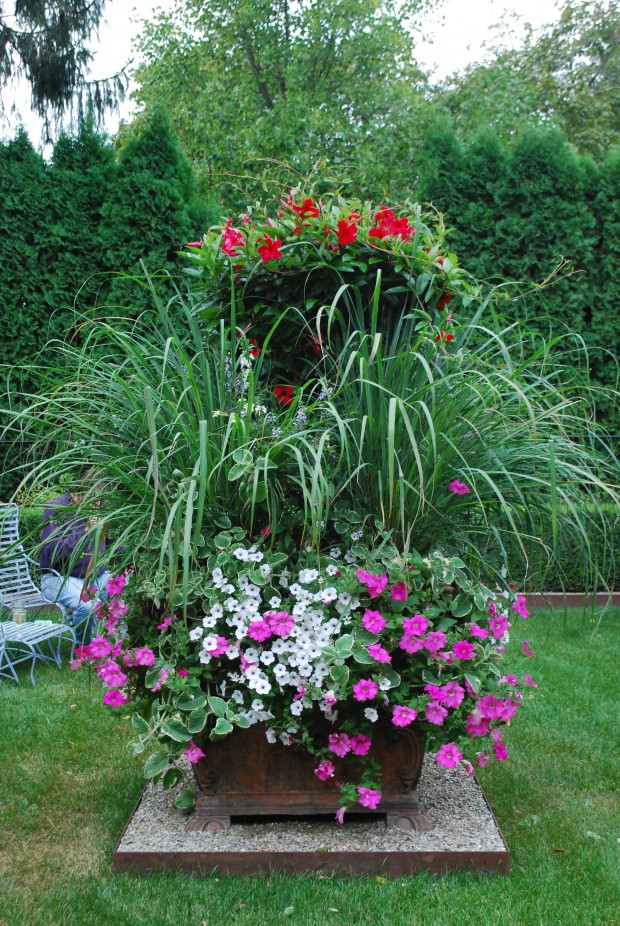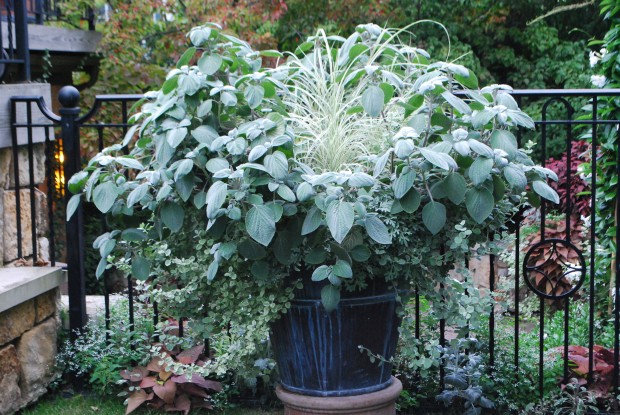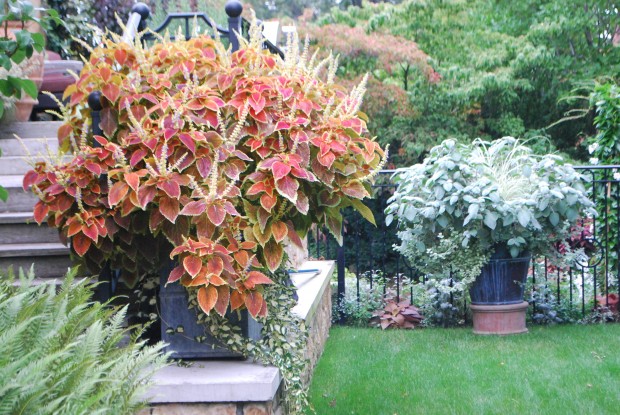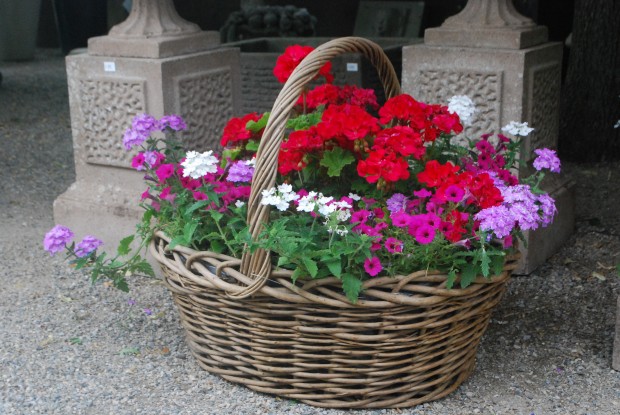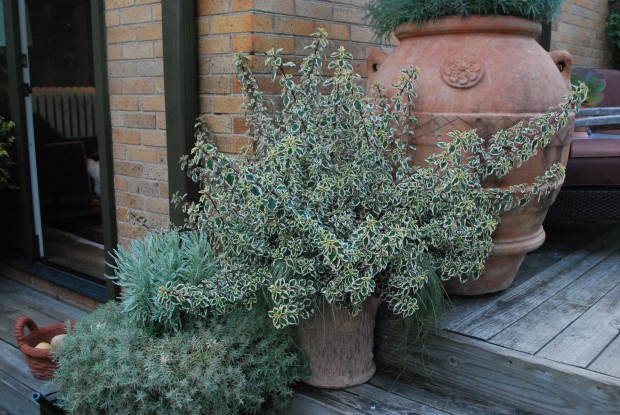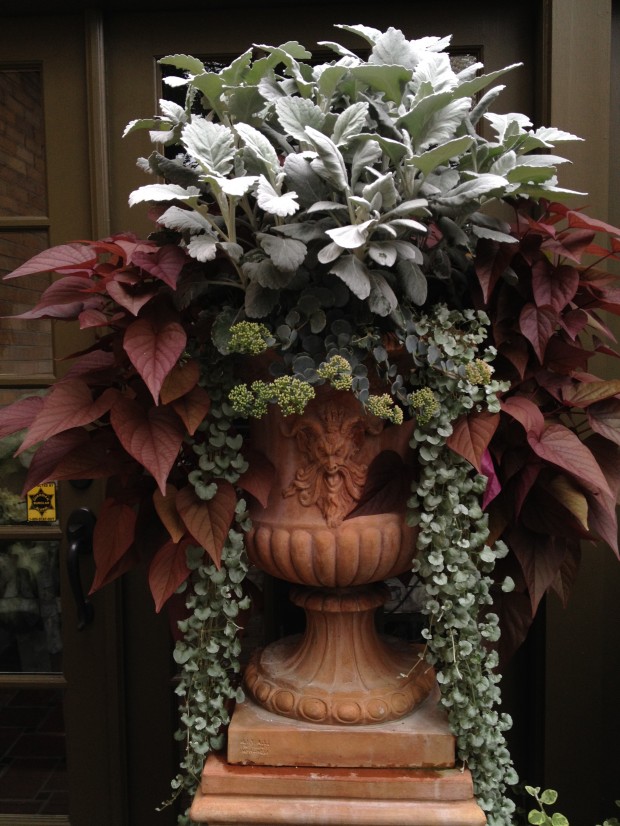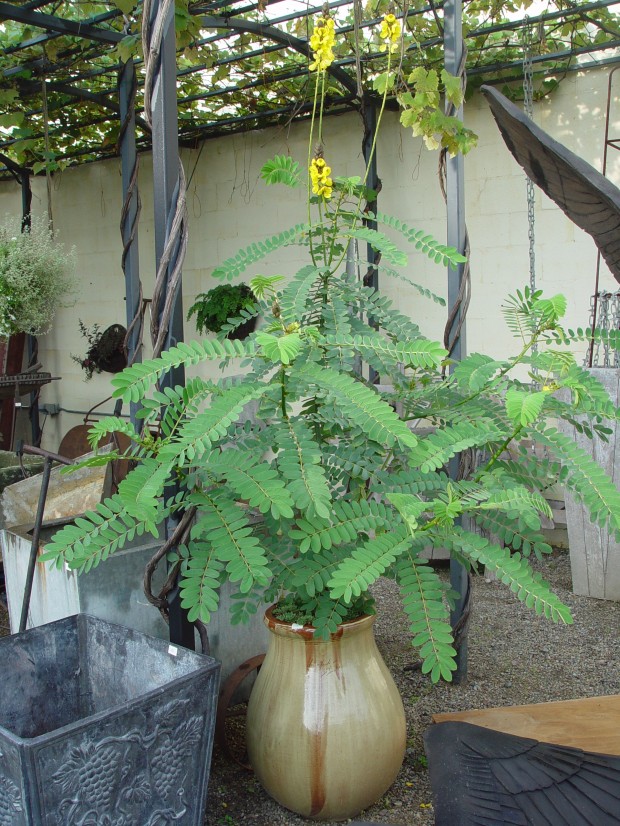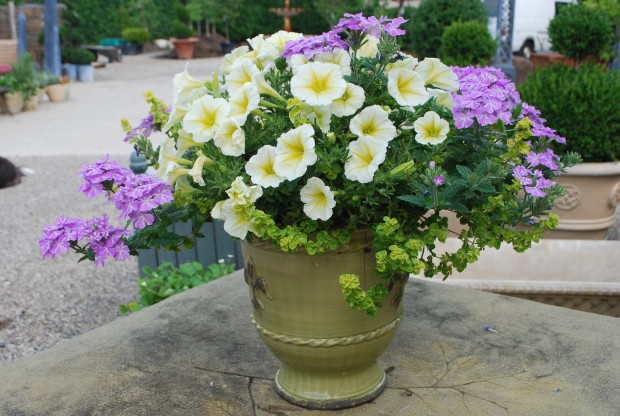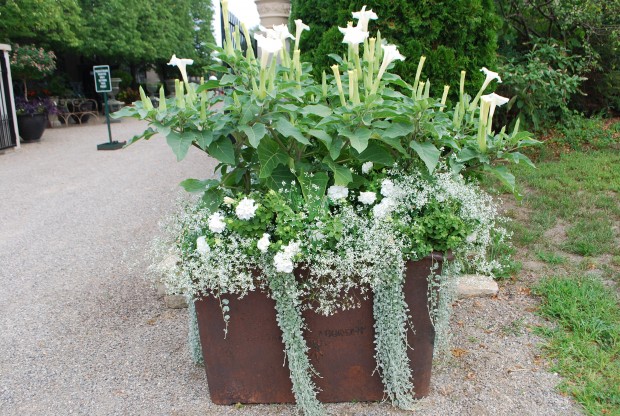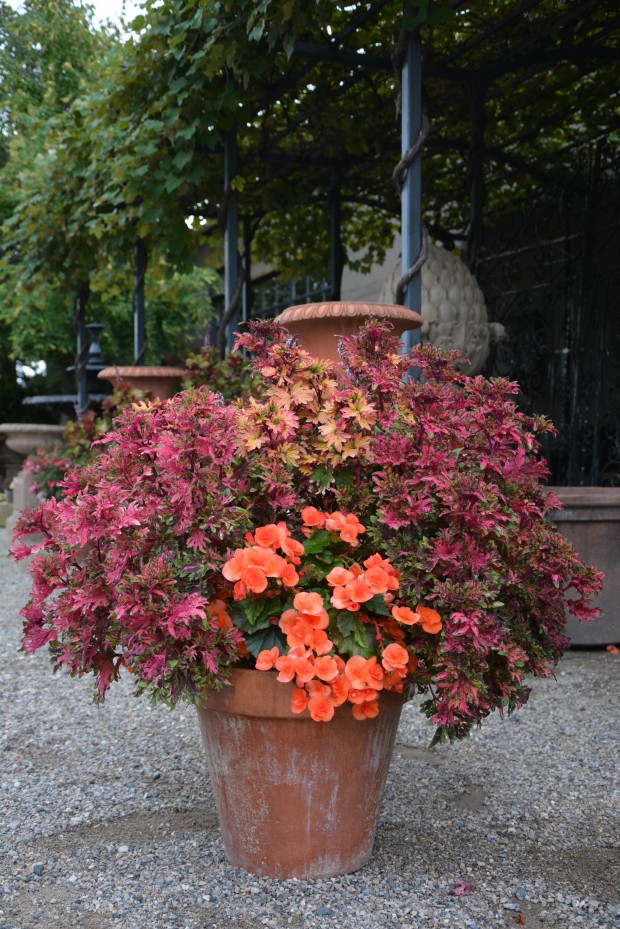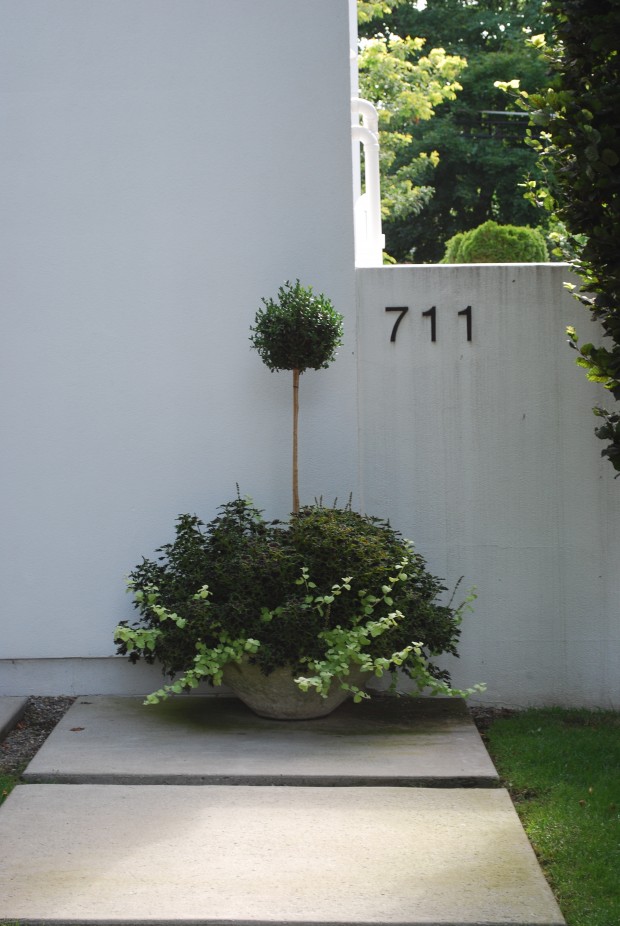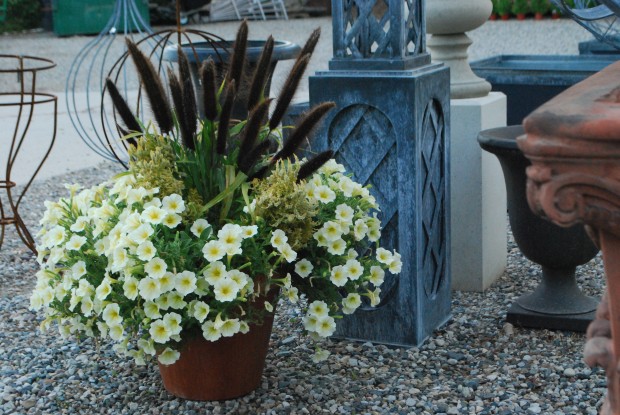I plant better than 80 annual plantings every year. Some are as simple as a pair of pots on the front porch. Others involve multple containers, and in ground planting. I enjoy each and every one of them. That said, the work of this chases me from late May until the end of the first week of July. My late June clients are looking to replace their spring plantings. As Detroit Garden Works is not a full service nursery, I shop for all of my clients, individually.
That shopping takes me to lots of local nurseries and my local farmer’s market. One nursery custom grows a lot of material which I like to use. Whether that material involves new varieties of caladiums I grew last year, or nicotiana cultivars, specialty and unusual plants make the difference between a rote container scheme, and a freshly imagined and exciting planting.
The shopping is the first part. Pickups of plants, and arranging for deliveries is a job in and of itself. Some plantings are so large I arrange for delivery to the site the day of the planting. No matter if I am picking up, or having plants delivered, planning for the job comes first. The planning and designing takes a lot of thought and detail, so the installation goes smoothly and quickly. Once the plants and my crew meets at the job, the first move is to clean up. The spring tulips and weeds may need to be cleaned out. The pots need fresh soil. Steve arranges for our custom blend of soil for containers to be mixed. That soil is delivered to a company who provides bagging, and shipping. We go through 2 semi truck loads of our custom container soil mix a season.
Once the pots get a new planting, and the annuals are planted in ground, we sweep up, and water thoroughly-at least three times. We water until we are blue in the face. Newly planted plants have no ability to take up water from the surrounding soil until their roots reach out. A really good soak makes for a really promising beginning.
The next two days calls for temperatures in the 90’s. We were especially careful today to soak every pot thoroughly. Though this picture seems hardly worth posting, what I like is how wet everything looks. The landscape installation here is 4 years old now. All of the woody plants have taken hold, and are thriving. The flowers add a finishing detail that makes the landscape seem like home.
I make trouble for myself. I will not plant too early. Most of my clients understand this about me, and don’t fuss. I am not so concerned about frosty air temperatures. I am interested in the temperature of the soil. If the soil is too cold, the annual plants are stopped dead in their tracks. Most annual plants are native to tropical locales. They know no cold.
It is hard to wait, given how many plantings there are to get done. But a tropical plant which is planted into freezing soil will be set back. The growth may be stunted. It might take weeks for them to recover from the insult. They may never recover. I like planting in soil that has thoroughly warmed up. This makes the transplanting process take no longer than a blink of an eye.
Coleus and impatiens hate cold soil. Massed plantings of impatiens and fibrous begonias at my local shopping center in early May shrivel before they ever make a move to grow. Looking at these plantings makes me wince. Some clients will call, concerned that they do not have their plantings before Memorial Day. I tell them they are one of the lucky ones. No annual planting before its time means their plants will take hold and grow like crazy.
This may be foolishness on my part with no basis in science, but I do believe that annuals that are planted too early peter out too early. I usually plant my own pots the end of the first week of June. I still have them growing strong into October. If your annual pots give out the end of August, you might want to look at your planting date.
I understand the urge to plant early. Who isn’t ready for the summer gardening season by late April? But April and May means spring in Michigan. The weather can be dicey. Those clients that have to have early plantings miss out on some great plants that will not tolerate the cold. Caladiums, coleus, New Guinea impatiens, heliotrope, angelonia, and begonias all abhor cold soil.
Newly planted containers do not give up what is to come. These boxes will be overflowing with nicotian mutabilis, and nicotiana alata white in another month. The pink petunias which are so much in evidence will be but a foot note, once the nicotiana get going. No annual pot in my zone looks great in June. If you have an idea for a party or event in late May or June, plant for spring. The annual flowers are just getting up a head of steam in late July.
The first order of business on this pool deck is to get the pots out, locate the irrigation lines, and fill the pots with soil.
I photograph all of my annual plantings when they are planted, and when they peak. I draw the design for each pot on the back side of last year’s picture. I use these pictures to tune up my choices in plants. Success with container gardening involves a gardener, a particular location-and whatever else nature has in store to dish out. I try to keep a visual record from which I can learn.
Planting the container gardens is much different than designing the landscape and gardens. But what I especially like about the containers is that they represent the finish. The finishing touches make a landscape very personal. The annual flowers. The right arbor, and that special bench.
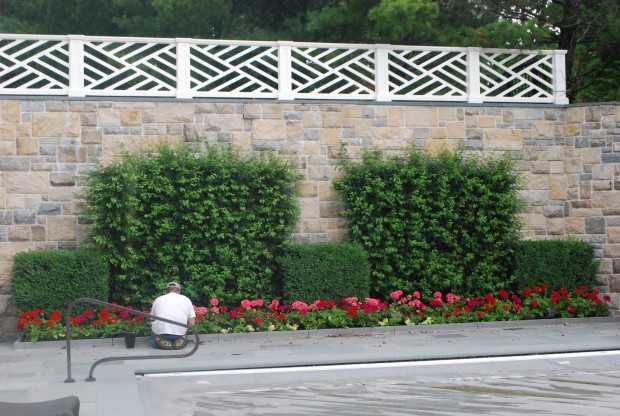
I never met anyone who did not like or respond to music. Nor have I ever met anyone who did not respond to to the beauty that is a flower. The summer growing and flowering tropical plants are a taste of Eden in the northern gardens I look after. I plant lots of them at home, and enjoy them every day.
At the end of the day, I would plant pots-the more, the better.

